Highest crowd numbers at Gallipoli since centenary
Highest crowd numbers at Gallipoli since centenary
The passage of time has not deterred thousands from returning to Anzac Day services in Gallipoli, Türkiye, with the highest crowd numbers seen since the 2015 centenary of the doomed World War I landings.
As the sounds of karanga and the digeridoo echoed across the commemorative site, the Dawn Service commenced to the backdrop of the sun rising across the solemn crowd.
More than 1500 New Zealanders, Australians, Turkish and people of other nationalities gathered on Tuesday, 108 years on from the horrific yet formative battle that saw the loss of more than 10,000 ANZAC lives.
As the Master of Ceremonies opened the service, members of both the New Zealand Defence Force (NZDF) and Australia’s Federation Guard mounted the catafalque party.
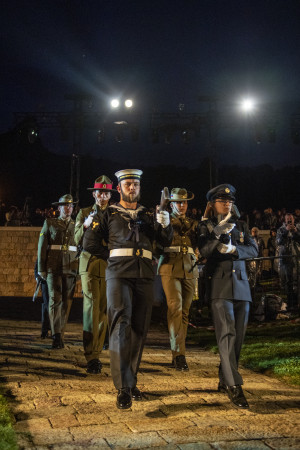
Catafalque party
Minister of Defence Andrew Little delivered the commemorative address and expressed condolences and sympathy to the people of Tϋrkiye affected by the devastating earthquakes in February.
“Those of us who saw the footage of the aftermath of the earthquake were struck by the courage and determination of the first responders. As we gather here today, we are reminded of the bravery and self-sacrifice of the unarmed medical staff belonging to both sides on the battlefield that stands behind us. They helped friend and foe alike with a great humanity and care.”
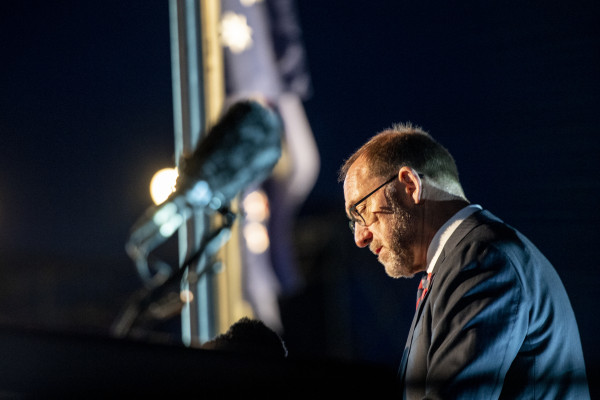
Minister of Defence Andrew Little
Minister Little spoke of the doctors and stretcher bearers of the New Zealand Medical Corps who risked everything to reach the wounded in the firing line.
“More than a century after the end of the battle we remain quite properly in awe of how ordinary men put aside their fears and found such reserves of courage and endurance. Their example should inspire us all to try, in whatever way we can, to make the world a place in which no one has to endure the kind of suffering and torment that saturated this peaceful cove in 1915.”
Hymns and prayers were then recited before officials laid wreaths in remembrance, including Chief of the New Zealand Defence Force Air Marshal Kevin Short, and NZDF contingent commander, Wing Commander Rachel James.
Warrant Officer of the New Zealand Defence Force, Warrant Officer Class 1 Mark Mortiboy, read the Ode of Remembrance in te reo Māori while his counterpart in the Australian Defence Force delivered the ode in English.
A rousing delivery of the Last Post and Reveille was played before the Turkish, New Zealand and Australian national anthems were performed.
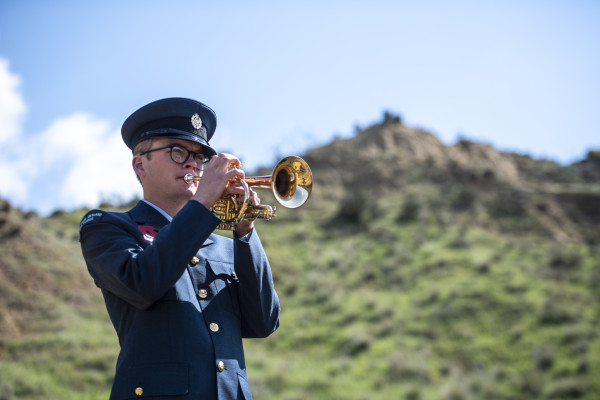
Leading Aircraftman James Guilford bugling the Last Post
NZDF Chaplain Class 2 James Molony delivered the final blessing for the service before the catafalque party dismounted.
Following the Dawn Service, around 500 people attended the New Zealand service held at Chunuk Bair to honour one of the bloodiest battles of the Gallipoli campaign.
Minister Little laid a wreath at the Atatürk Memorial which stands beside the New Zealand Memorial, before Chaplain Class 2 Molony opened the event.
Her Excellency Zoe Coulson-Sinclair, the New Zealand ambassador to the Republic of Türkiye, welcomed guests before Minister Little provided a commemorative address.
“Each year we gather on Chunuk Bair by this simple, but poignant memorial to the New Zealanders who came ’from the uttermost ends of the earth’ to fight and die here in the service of our country,” Minister Little said.
NZDF Person of the Year, Petty Officer James Faleofa, spoke about the experiences of 20-year-old Trooper Clutha Mackenzie of the Wellington Mounted Rifles, the son of a former Prime Minister, who lost his sight during a battle at Gallipoli.
“The horror that was Chunuk Bair was the last thing he ever saw - to remain seared forever into his memory.
Clutha MacKenzie spent the rest of his life as an advocate for the blind, both nationally and internationally, and was one of the pivotal international figures in the development of a universal Braille system.
“What happened in that frightening and horrific moment on Chunuk Bair that day in August 1915 defined Clutha MacKenzie’s life forever. From it, came a contribution to creating a better future for generations of blind people that created a lasting and positive legacy.”
Air Marshal Short delivered a reading that focused on the brotherhood of those who fought and died on the battlefields of Gallipoli.
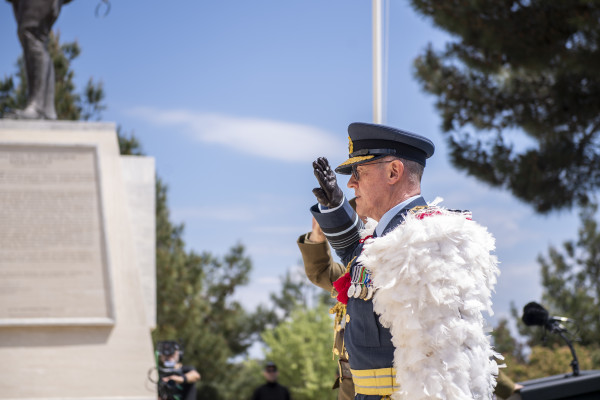
Chief of the New Zealand Defence Force Air Marshal Kevin Short
“There were 56 pairs of brothers among the dead, some dying within minutes or hours of each other. In many other instances one brother was killed while the other survived. Tragically, a number saw their brothers die,” he said.
“We keep returning here, even after more than a hundred years, because Gallipoli is such a part of our collective national identity. We still maintain a connection to the generation that endured so much here and in the years that followed.
“Their stories are still very much alive in their families and in our communities and we feel compelled to remember them in this place.”
Official speeches were supported by performances by the NZDF band and Māori Cultural Group, while Australian and Turkish military personnel also conducted ceremonial duties during the service.
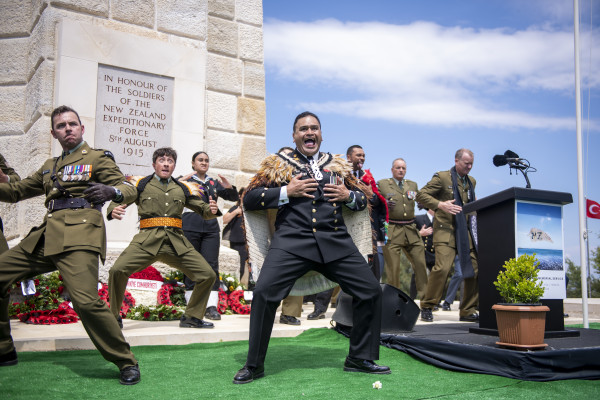
The Māori Cultural Element
The commemoration concluded with a poignant rendition of Pō Atarau (Now Is The Hour) performed by Lance Corporal Bryony Williams and the Māori Cultural Element before the entire contingent took part in the NZDF haka, He Taua.
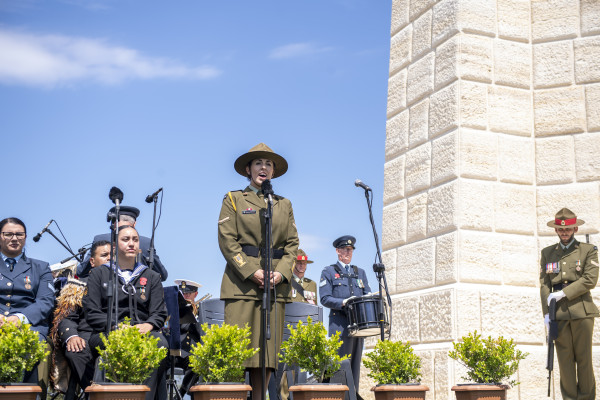
Lance Corporal Bryony Williams
